Philodendron Plowmanii is a member of the Araceae family and is native to Ecuador and Peru. It was named after the American botanist Timothy Plowman, who was an expert in the study of plants from the tropical Andes.
This plant can grow quite large, up to 8 feet in height with its large leaves growing up to 12 inches long and 6 inches wide. Another striking feature of this plant is its various shades of green and prominent yellow veins.

The Plowmanii Philodendron is a relatively easy plant to care for, as long as it is provided with the right conditions. Like other members of the Philodendron family, it is also known for its air-purifying qualities, making it a popular choice for indoor gardens.
All About Philodendron Plowmanii
Philodendron Plowmanii is a stunning tropical plant that originates from Peru and Ecuador, and was named after the renowned botanist Timothy Charles Plowman. Massive heart-shaped leaves create one of its eye-catching features, and the Plowmanii Philodendron can grow to 30 feet outdoors.
Grown indoors, the Philodendron Plowmanii creeps its way to around 8 feet in height with leaves growing 7 – 15 inches long which makes them the main attraction of this tropical plant. Semi-glossy and deeply quilted, the leaves show off with greens and yellows that vary in color.
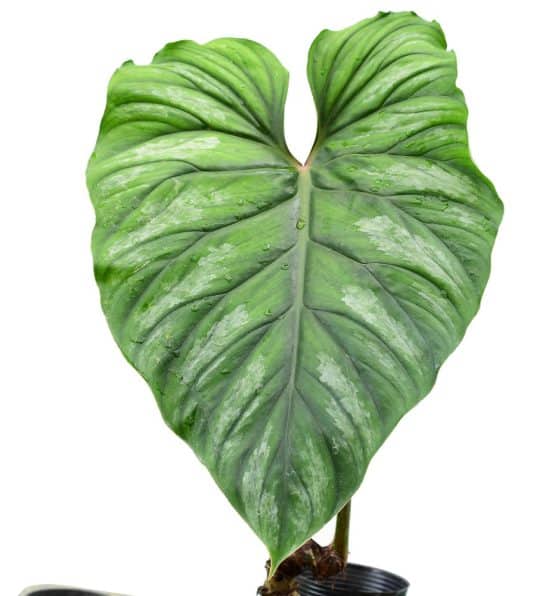
The leaf stems of P. plowmanii are also quite unique in that they are ruffled instead of being smooth like most other Philodendrons, adding an additional element of visual interest to this already-striking plant.
Philodendron Plowmanii Overview:
| Common Name: | Philodendron Plowmanii |
| Botanical Name: | Philodendron Plowmanii |
| Plant Type: | Tropical |
| Size: | Up to 8 foot tall indoors |
| Light: | Bright indirect sunlight |
| Soil: | perlite, sphagnum moss, and peat |
| Water: | Moist but not waterlogged |
| Vulnerabilities: | Root rot, overwatering and improper lighting, aphids, Pseudomonas leaf spot, Erwinia blight, and Xanthomonas leaf spot |
| USDA Growing Zones: | 9b – 11 |
How to Care for Philodendron Plowmanii
To keep your Philodendron Plowmanii healthy and thriving, it's important to provide it with the right care. Here are some tips to help you care for your plant.
Philodendron Plowmanii Soil Needs
The soil for the Plowmanii plant should be kept moist with high organic matter. Avoid growing it in sandy, muddy, or wet soils. Add compost to amend the soil. This plant prefers a soil medium with soil pH ranging from 4.5 to 6, slightly acidic. This Philodendron can be grown in any good quality aroid mix as well as soilless mediums like perlite or sphagnum moss.
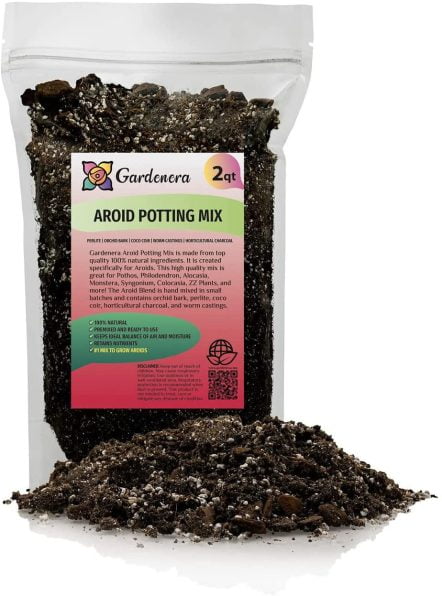
Philodendron Plowmanii Watering Needs
Watering is an essential aspect of Philodendron Plowmanii care, as the plant requires consistent moisture to thrive. Overwatering can lead to root rot and other issues, while underwatering can cause wilting, yellowing leaves, and stunted growth.
To water your Philodendron Plowmanii properly, you should first check the soil moisture level. Stick your finger about an inch or two into the soil – if it feels dry to the touch, it's time to water the plant.
During the summer months when the plant is actively growing, you may need to water your Philodendron Plowmanii once or twice a week, depending on the humidity and temperature levels in your home.
In the winter, when the plant's growth slows down, you can water it less frequently, but still, make sure the soil doesn't completely dry out. Keeping the soil consistently moist, without overwatering, will help your Plowmanii thrive and grow into a beautiful, healthy plant.
Lighting for the Philodendron Plowmanii
Proper lighting is another factor in the care of Philodendron Plowmanii. These plants prefer bright, indirect light, but can tolerate lower light levels. The ability for this plant to tolerate lower light makes it a great plant for bedrooms and other dimly lit rooms in your home.

Direct sunlight can scorch the leaves. If the leaves are small and the plant is growing slowly, it may be an indication that it needs more light. By finding the right balance of light for your Plowmanii, you can help it grow into a healthy, vibrant plant.
Philodendron Plowmanii Humidity & Temperature
Philodendron Plowmanii is a tropical plant that requires warm and humid conditions to thrive. The ideal temperature for this plant is between 65-80°F (18-27°C), with a humidity level between 40 -60%. If you live in a dryer area, you can increase the humidity levels by using a humidifier or placing a tray of water with pebbles under the pot.
If the humidity levels are too low, the plant may show signs of stress, such as brown tips and droopy leaves. Providing your Plowmanii Philodendron plant with the right conditions can help it grow into a healthy and beautiful plant. Consider grouping your plants to create a microclimate that may raise the humidity level.
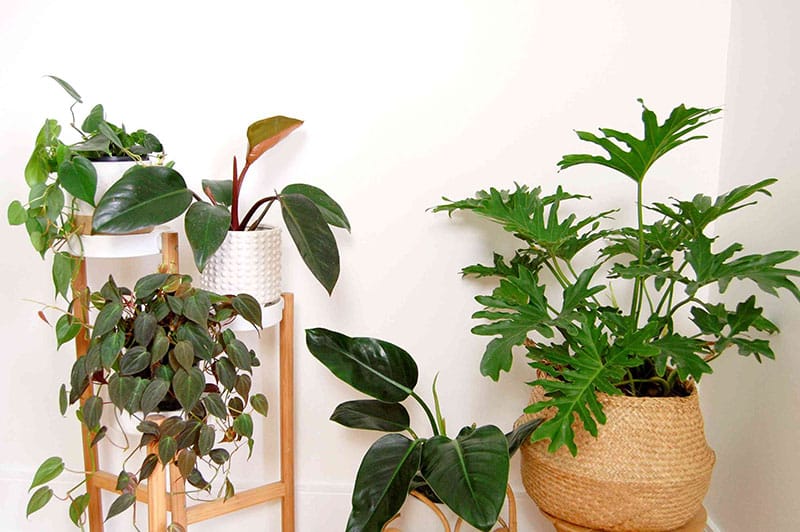
Fertilizing the Plowmanii Plant
P. plowmanii does relatively well without much need for fertilization. However, you can add some on occasion to boost its growth rate.
When adding fertilizer remember to dilute the formula and make sure you're adding it during the plant's growing season. Adding fertilizer during the dormant phase can actually be damaging to your plant.
Use a slow-release fertilizer a couple of times per year and make sure it's a good quality organic liquid fertilizer. Your goal is to mimic the beneficial qualities of a natural environment without overwhelming the plant with chemical stimulants.
Plowmanii Pruning Method
Regular pruning helps to remove dead or damaged foliage, encourages new growth, and helps to shape the plant. Pruning helps to maintain the appearance and the health of your plant.
To prune your Philodendron Plowmanii, you'll need a pair of sharp, clean pruning shears. Start by identifying any dead or damaged leaves and removing them at the base of the stem. You can also remove any yellow or brown leaves, as these can be a sign of overwatering, underwatering, or nutrient deficiency.
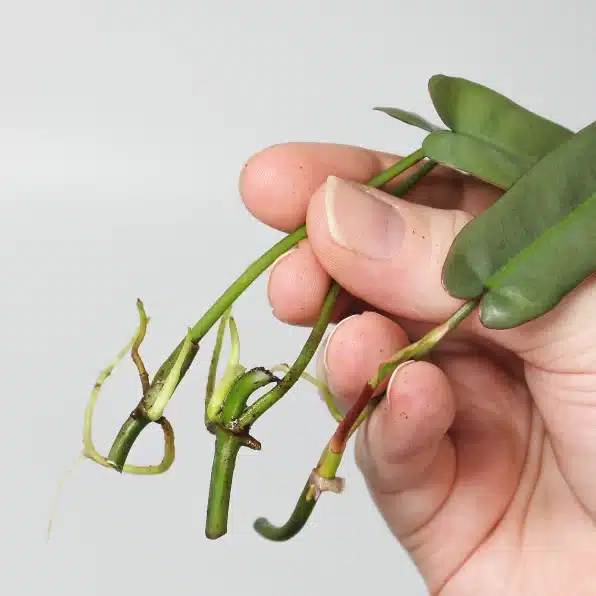
If your Philodendron Plowmanii is getting too large or out of control, you can also prune back the plant to a smaller size.
Philodendron Plowmanii Propagation
The stem cutting method of propagating your P. plowmanii is a great way to get new plants. Carefully take stem cuttings using clean shears or scissors, prune them at least 2 to 3 inches long and make sure your cutting has 1-2 leaves on it.
You can propagate the cuttings either in water or soil. To propagate in water, place the cuttings in a glass jar, submerging the bare nodes in water, but be sure that the water is not touching the leaves. Change the water every few days and keep the jar in a spot with filtered light and moderate temperatures. Look for signs of root development within 3-4 weeks.
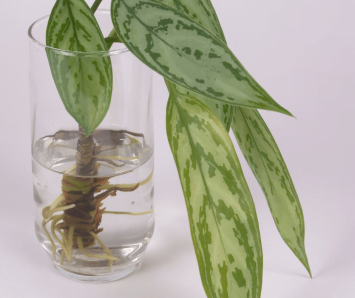
To propagate in soil, place the cuttings in a slightly acidic soil, with the cut end inserted about an inch into the soil. Cover the pot with plastic to create a greenhouse environment, and poke some small holes in the plastic for proper air circulation. Keep the soil moist, and look for signs of root development within a few weeks.
Once the cuttings have developed roots and new growth, you can transfer the plant to a larger container and continue caring for it as you would a mature Philodendron Plowmanii.
What Plants is Philodendron Plowmanii Similar To?
Philodendron Mamei: Often mistaken for Philodendron Plowmanii due to their close resemblance, the major difference between the two is that Mamei tends to have silver variegation while the Plowmanii plant does not. Both species offer equally stunning foliage.

Philodendron Dark Lord: This rare-find plant has highly regarded foliage that begins deep orange to blood-red and can transition to a deep dark green top with a metallic maroon underside. It loves a warm location with bright indirect light.
Philodendron Pastazanum: While both the Philodendron Plowmanii and Pastazanum have heart-shaped leaves, the Plowmanii plant has a much darker shade as well as venation. The Pastazanum is light-colored and has almost white venation. It is mainly found crawling on the grounds of most tropical rainforests and has extremely gorgeous heart-shaped leaves. The plant name originated in the province of Pastaza in the eastern jungles of Ecuador.
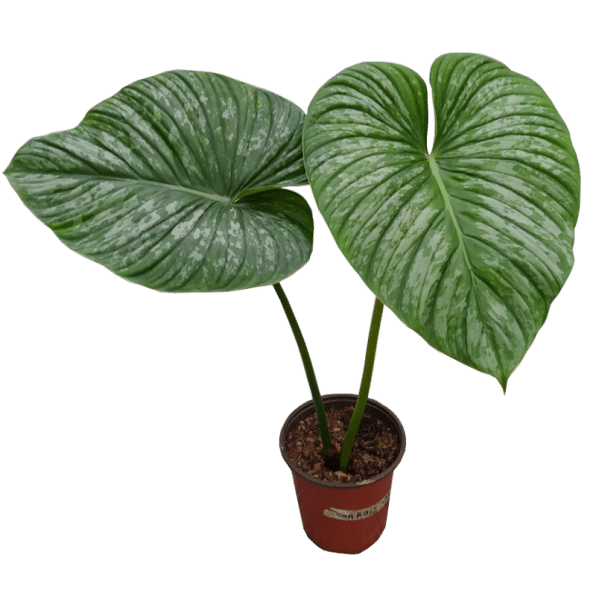
Monstera Deliciosa: Also known as the Swiss cheese plant, this popular plant has large, glossy, heart-shaped leaves with distinctive splits and holes. It prefers bright, indirect light and moist soil.
Common Problems for Philodendron Plowmanii
Philodendron Plowmanii is generally a low-maintenance plant, but it can still encounter some common problems. Let's take a look at three of these common problems.
Growing
Philodendron Plowmanii is generally a hardy and easy-to-care-for plant, but like any plant, it can face growing problems. One of the most common issues is overwatering, which can lead to root rot and other fungal diseases.
It's crucial to ensure that the soil is well-draining and that excess water is drained from the pot to prevent waterlogging. On the other hand, under-watering can lead to stunted growth and leaf yellowing, so it's essential to maintain a consistent watering schedule.
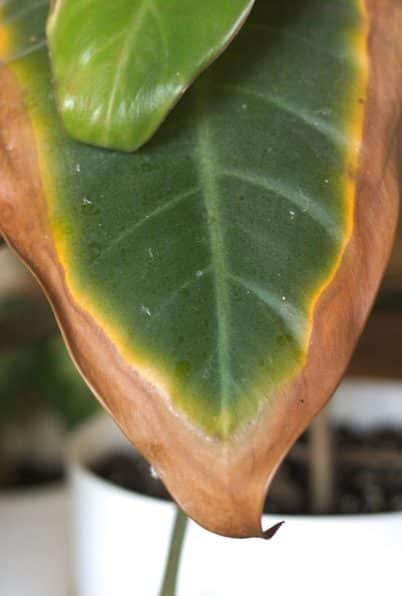
Another growing problem that can affect philodendron plowmanii is poor lighting conditions. Although this plant can tolerate lower light, it prefers bright, indirect sunlight. If the plant isn't getting enough light, it may become leggy, and its leaves may lose their vibrant color.
Diseases
Philodendron Plowmanii is susceptible to several diseases such as Pseudomonas leaf spot, Erwinia blight, and Xanthomonas leaf spot. Erwinia blight is a prevalent disease that causes yellowing and stunted growth of the plant. This disease usually affects plants that are grown in waterlogged conditions.
Pseudomonas leaf spot is caused by the bacteria Pseudomonas, which creates yellow lesions with dark centers on the leaves. This disease is more common in high-temperature conditions and when the plant is frequently misted.
Xanthomonas leaf spot is another disease that affects Plowmanii, caused by the Xanthomonas bacteria. This disease is characterized by yellowing and wilting of the leaves, and it commonly affects plants with wounded leaves.
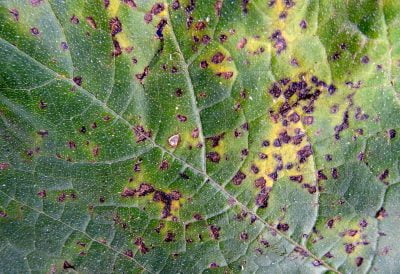
High humidity and temperature levels increase the susceptibility of the plant to this disease. These diseases can pose a significant challenge to the growth and development of Philodendron plowmanii, and it is important to monitor the plant for any signs of infection and take preventive measures to control their spread.
Pests
Mealy bugs and aphids are the most common pests that attack Philodendron Plowmanii. Mealy bugs are small, white, and waxy insects that can be found on the plant's foliage, stems, and roots. They suck sap from the plant and weaken it, making it more susceptible to other diseases.
Mealy bugs can also produce honeydew, a sticky substance that can attract ants and other insects. If left untreated, mealy bugs can cause significant damage to your plant and even kill it.
Aphids are tiny, soft-bodied insects that come in a range of colors, including green, yellow, and brown. They can be found on the undersides of the plant's leaves and stems, and they also suck sap from the plant. Aphids reproduce quickly, and a large infestation can cause stunted growth, leaf distortion, and leaf drop.
Other Things to Know About Philodendron Plowmanii
This plant is a slow grower and can take several years to reach its full size. It is also important to note that while Plowmanii is known for its air-purifying qualities, it is still toxic to pets and humans if ingested.
Another important factor to consider when growing this Philodendron is that it is a creeping plant that can grow quite tall. It will require some kind of support structure, such as a moss pole or trellis, to keep it upright and prevent it from toppling over.

Philodendron plowmanii can tolerate some degree of neglect and suboptimal conditions but providing it with proper care and attention will help it thrive.
FAQ’s
Is Philodendron Plowmanii easy to care for?
Yes, the Philodendron plowmanii is easy to care for. All it needs are its basic requirements of bright indirect light, moist soil but not overwatered, and an aroid soil mixture.
Is the Plowmanii a fast grower?
Plowmanii is known to be a slow grower, reaching a length of 8 feet max indoors. If you want a bigger plant you can have it outdoors in specific zones.
Is the Philodendron Plowmanii a climber or crawler?
Philodendron Plowmanii is a crawler. It's used to creeping its way on the ground in tropical areas of Ecuador and Peru.
Is Philodendron Plowmanii rare?
Yes, Philodendron Plowmanii is considered one of the rare philodendron varieties.

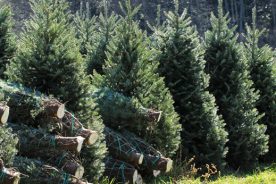

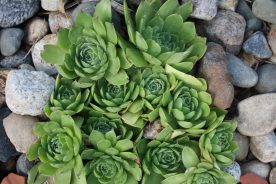

No Comments